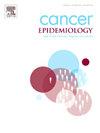Differences in lung cancer death rates by rural vs. urban status in comparison to all-cancer death rates — United States, 1999–2020
IF 2.4
3区 医学
Q3 ONCOLOGY
引用次数: 0
Abstract
Background
Differences in all-cancer mortality by rural vs. urban status exist; limited information exists regarding how lung cancer contributes to these differences. We describe the contribution of lung cancer to rural-urban differences in all-cancer death rates.
Methods
We used National Vital Statistics System data to calculate age-adjusted lung cancer death rates by rural vs. urban status, overall and by multiple subgroups. We calculated the average annual percent change in cancer death rates by rural vs. urban status between 1999–2020, and percentage contribution of lung cancer to excess all-cancer mortality in rural counties in 2020.
Results
In 2020, lung cancer death rates were higher in rural counties among females (33.5 vs. 25.7) and males (49.0 vs. 35.9). Between 1999–2020, larger declines in lung cancer death rates were generally observed in urban counties. In 2020, lung cancer contributed 44.4 % to the excess all-cancer mortality in rural counties.
Conclusions
Lung cancer death rates were generally higher in rural counties, and differences in death rates increased over time. In 2020, lung cancer contributed a large percentage to excess all-cancer mortality in rural counties. Implementation of interventions to improve lung cancer prevention, screening, and treatment might reduce rural-urban differences in cancer deaths.
与所有癌症死亡率相比,农村和城市地区肺癌死亡率的差异——美国,1999-2020年
背景:所有癌症死亡率存在城乡差异;关于肺癌如何导致这些差异的信息有限。我们描述了肺癌对城乡之间所有癌症死亡率差异的贡献。方法我们使用国家生命统计系统的数据,按农村和城市状况、总体和多个亚组计算年龄调整后的肺癌死亡率。我们计算了1999-2020年间农村和城市癌症死亡率的年均变化百分比,以及2020年农村地区肺癌占所有癌症死亡率的百分比。结果2020年,农村各县肺癌死亡率女性(33.5比25.7)和男性(49.0比35.9)高于农村各县。1999年至2020年期间,通常在城市县观察到肺癌死亡率下降幅度较大。2020年,肺癌占农村县所有癌症死亡率的44.4% %。结论农村地区肺癌死亡率普遍较高,且死亡率差异随时间推移而增大。2020年,在农村各县所有癌症的超额死亡率中,肺癌占很大比例。实施干预措施以改善肺癌的预防、筛查和治疗,可能会减少城乡之间癌症死亡的差异。
本文章由计算机程序翻译,如有差异,请以英文原文为准。
求助全文
约1分钟内获得全文
求助全文
来源期刊

Cancer Epidemiology
医学-肿瘤学
CiteScore
4.50
自引率
3.80%
发文量
200
审稿时长
39 days
期刊介绍:
Cancer Epidemiology is dedicated to increasing understanding about cancer causes, prevention and control. The scope of the journal embraces all aspects of cancer epidemiology including:
• Descriptive epidemiology
• Studies of risk factors for disease initiation, development and prognosis
• Screening and early detection
• Prevention and control
• Methodological issues
The journal publishes original research articles (full length and short reports), systematic reviews and meta-analyses, editorials, commentaries and letters to the editor commenting on previously published research.
 求助内容:
求助内容: 应助结果提醒方式:
应助结果提醒方式:


